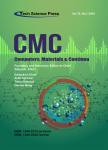Early Detection of Diabetic Retinopathy Using Machine Intelligence throughDeep Transfer and Representational Learning
作者机构:Department of Computer Science and Information TechnologyUniversity of SargodhaSargodha40100Pakistan and School of Systems and TechnologyUniversity of Management and TechnologyLahore54782Pakistan Department of Computer ScienceCOMSATS University IslamabadWah CampusIslamabadPakistan University Hospital BirminghamBirminghamUK Shifa International HospitalIslamabadPakistan Department of Computer Science and EngineeringSejong UniversitySeoulKorea
出 版 物:《Computers, Materials & Continua》 (计算机、材料和连续体(英文))
年 卷 期:2021年第66卷第2期
页 面:1631-1645页
核心收录:
学科分类:1002[医学-临床医学] 100201[医学-内科学(含:心血管病、血液病、呼吸系病、消化系病、内分泌与代谢病、肾病、风湿病、传染病)] 10[医学]
基 金:the National Research Foundation(NRF)of Korea under the auspices of the Ministry of Science and ICT Republic of Korea(Grant No.NRF-2020R1G1A1012741)received by M.R.Bhutta.https://nrf.kird.re.kr/main.do
主 题:Diabetic retinopathy artificial intelligence automated screening system machine learning deep neural network transfer and representational learning
摘 要:Diabetic retinopathy (DR) is a retinal disease that causes irreversible *** occurs due to the high blood sugar level of the patient, and it is clumsy tobe detected at an early stage as no early symptoms appear at the initial level. To preventblindness, early detection and regular treatment are needed. Automated detectionbased on machine intelligence may assist the ophthalmologist in examining thepatients’ condition more accurately and efficiently. The purpose of this study is toproduce an automated screening system for recognition and grading of diabetic retinopathyusing machine learning through deep transfer and representational *** artificial intelligence technique used is transfer learning on the deep neural network,Inception-v4. Two configuration variants of transfer learning are applied onInception-v4: Fine-tune mode and fixed feature extractor mode. Both configurationmodes have achieved decent accuracy values, but the fine-tuning method outperformsthe fixed feature extractor configuration mode. Fine-tune configuration modehas gained 96.6% accuracy in early detection of DR and 97.7% accuracy in gradingthe disease and has outperformed the state of the art methods in the relevant literature.



